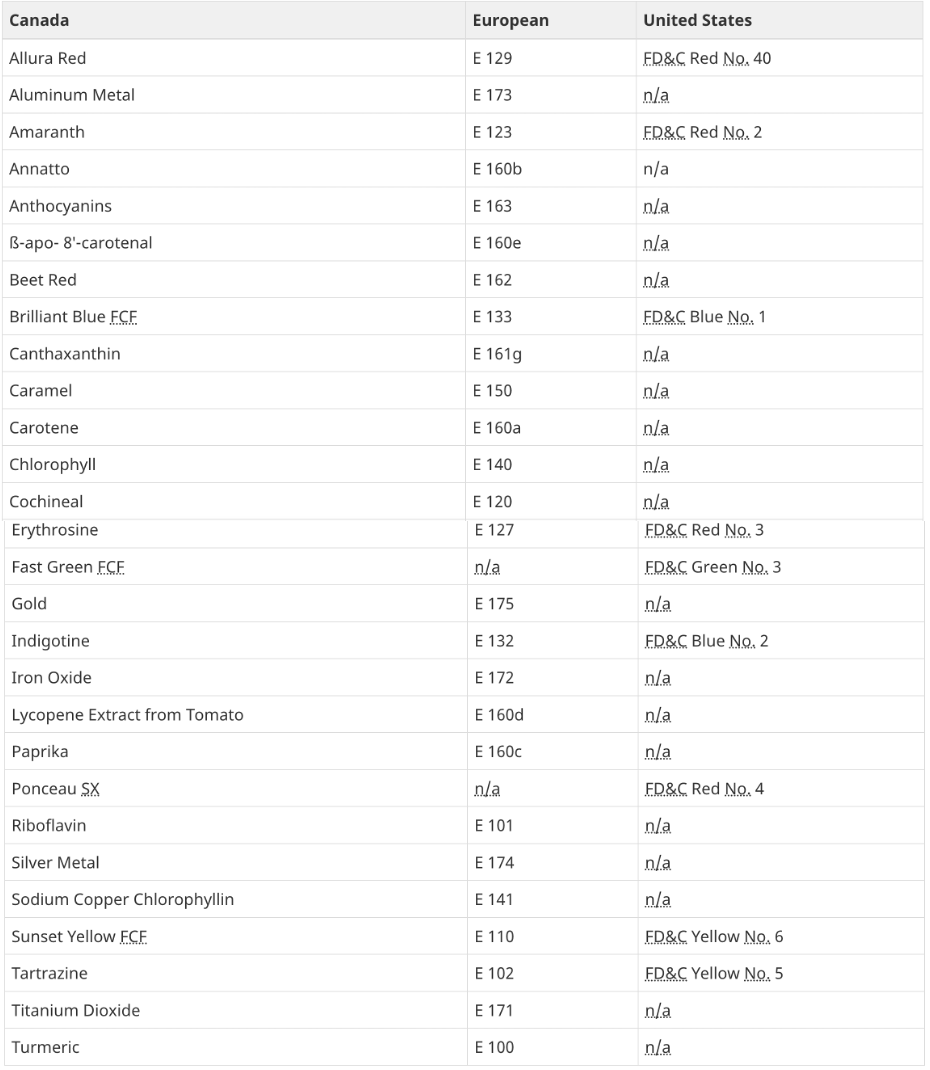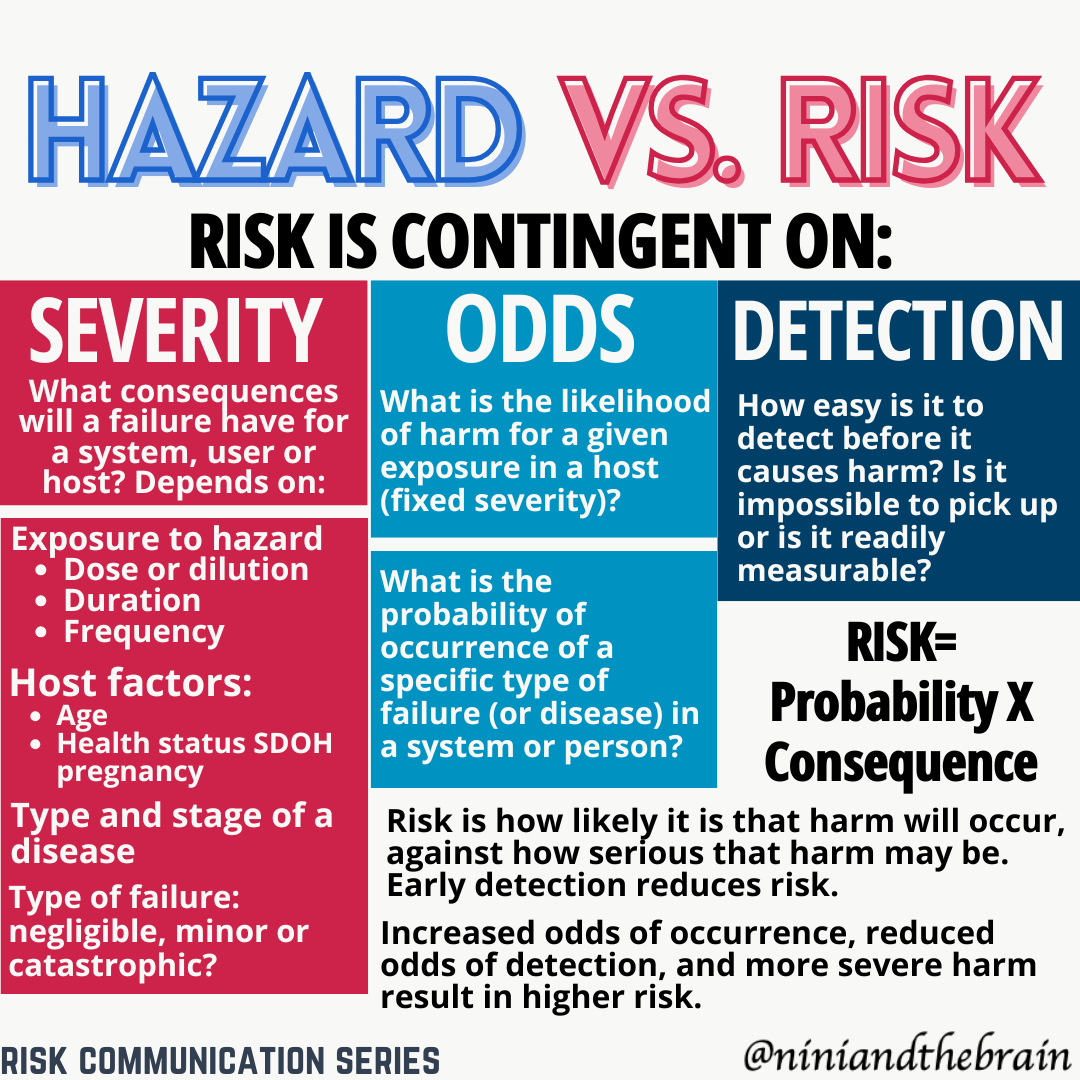The exhausting fear-mongering (about our food supply) in the wellness Comments section underscores we really don't understand risk (Part 1)
Why do we think risks are worse than they are and are utterly desperate to assign single points of failure to complex problems? The antidote to most viral misinformation is risk analysis.
I always question whether I should comment on viral mis/disinformation posts. I know I will be flooded with insults, ad hominem attacks, and all types of disrespect from individuals who are NOT there, I repeat, NOT there to change their minds. It leads to a bit of burnout, but it doesn’t come without insight -I learn quickly what people’s perceived threats are, as well as the common misconceptions or assumptions being made around their claims.
For a version of this article in Espanol, click here.
After 9/11, less severe injuries from car accidents increased due to a shift in travel behavior, as many Americans became afraid to fly and chose to drive instead. This phenomenon is driven by risk perception, where the fear of terrorism, particularly on planes, overshadowed the actual statistical safety of flying. The emotional impact of 9/11 made air travel feel less safe than it actually was. This led to an availability bias, where vivid, recent events make people overestimate the likelihood of similar risks occurring again.
At the peak of the Covid-19 pandemic, it also became glaringly obvious that people often misunderstand risk. For example, some feared the COVID-19 vaccine more than the virus itself, even as COVID-19 caused a year’s worth of daily 9/11-scale fatalities. Others preferred to wait for monoclonal antibodies once they were infected, opting for their risks over the preventative vaccine side effects when they were healthy.
The Role of the Risk Communicator
When I started COVID-19 communications on my Instagram, it was mainly to answer questions from friends back home. There weren’t many communicators in the space at the time (at least that I knew of, though we eventually found each other and became friends), and I thought I could help.
As expected, I very quickly stumbled into the complexities of the topics outside my direct expertise. My interdisciplinary background (in electrical engineering, electrochemistry, materials science, sensor design, food microbiology, and neurophysiology) taught me to respect the limits of my knowledge and lean on experts when needed. Consequently, I collaborated with epidemiologists, ID physicians, virologists, and immunologists to ensure accuracy early on. I was among the first to cross-post with others—when Meta reached out to discuss my work, I even suggested the collaboration feature they later implemented (though I won’t claim credit, ok maybe I do in my mind!).
Whilst not very clear initially, I quickly understood that the perspective I would offer as an engineer and data scientist would be vastly different - interestingly, it would turn out to be, according to some who came to my defense for speaking “outside of my lane”, remarkably effective. For what it’s worth, I worked tirelessly to remain evidence-based and asked for permission to reproduce content when applicable. Also, I made many new amazing friends whom I still keep in contact with (the best part of it all). Many of us combined our perspectives for this piece here.
What others considered my weakness (lack of niche expertise) became my greatest strength - that’s because I was able to translate my experience in risk analysis at the core of product development (sensors), where feasibility, regulatory, and scalability constraints intersect and trade-off, to risk and science communications. I was able to do this because I understood one thing: people are more open to new information when it aligns with their perceptions of risk (ie; safety).
The latest vilifying of food ingredients (and the dreaded comments section), once again underscores how safety is often conflated with risk in the public eye. These aren’t the same.
Safety is subjective because someone must decide what level of chance or magnitude of consequence is considered safe. Risk, by contrast, is an objective measure of the probability and consequence of an undesirable outcome.
While reducing risk certainly increases safety, tolerances for safety are subjective and variable and tend to be driven more by emotional factors rather than by objective data, like statistical evaluations of risks.
The discussion being had is about people’s perception of what is safe for them or not, not quantifiable risk.
People question the safety of our food supply based on cognitive distortions, politicization of science, and for some, lack of access to the right information. To compound that, falsehoods that evoke fear responses propagate faster than truths and reach more people, especially if the responses involve pointing fingers at one specific entity or individual.
In today's information ecosystem, science communication is risk communication (why I have called myself that), and in all fairness, that resonates the most with me and most importantly, the audience that is interested in what I may have to offer.
That being said, let's dig into the comments section and address some of the most common misconceptions that pivot around the notion that our food supply is unsafe from a risk analysis perspective. Once we get through this section I hope most people realize that while some aspects of our food supply may be perceived as unsafe, in reality, it is NOT high risk.
For context, we saw something similar with Boeing earlier this year, where people’s fear of flying got exploited by misleading headlines about air traffic incidents that were not related to aircraft make, and more importantly, not any worse than years prior. Many people felt unsafe, and yet, the risk of anything happening is the lowest up in the air.
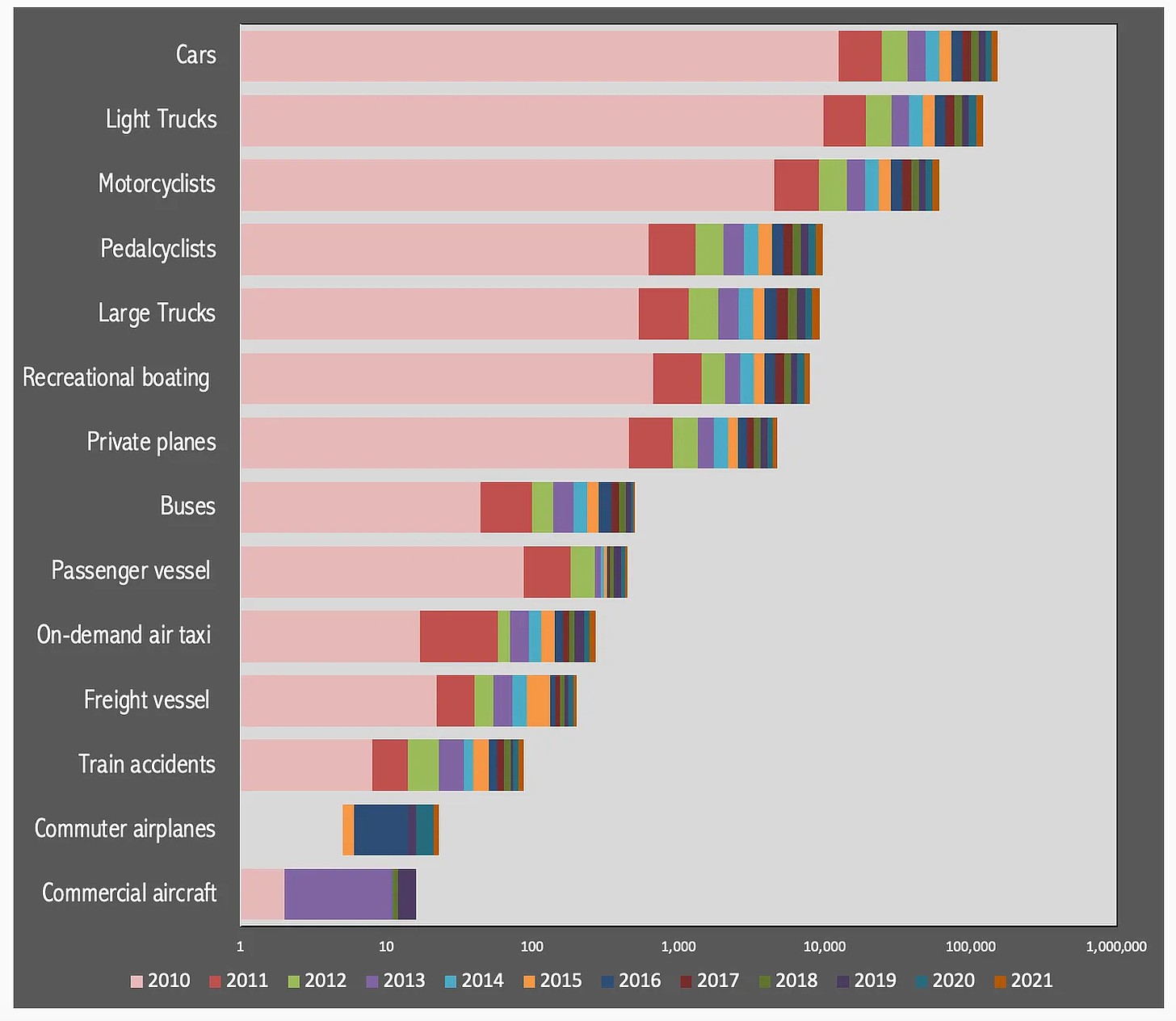
Thanks in advance to all the folks with relevant expertise who weighed in (toxicologists, food scientists, MPHs). We all work better together! (Ryan, David, Clara, Mauricio, Verónica and of course…@ foodsciencebabe).
Alright, let’s dig into the comments section… deep breaths. This will take several part. The biggest theme in the comments section certainly was the notion that:
1. Certain ingredients are banned in other countries (specifically food dyes, BHT) and thus are unsafe (especially to children)
There is a lot to unpack here. I don’t think anyone has done more work in this space than @foodsciencebabe. She has been tackling misinformation about GMOs, glyphosate, organic vs non-organic, pesticides, chemophobia, food ingredients and labels, the EWG since 2018, both on TikTok and Instagram. She’s a gem!
For my English-speaking followers, I refer you to her account where she dismantles this notion over and over. Below I attempt to summarize some main takeaways, (I have added the relevant links to her work), verified by Veronica Jaramillo, running @foodtruthproject. For my Spanish-speaking audience, I have translated, with permission, key takeaways from her article (special thanks to her for granting me permission to do this).
The argument around food safety is often framed by comparisons to what other countries allow or regulate. However, whether an ingredient is banned or not doesn’t necessarily reflect that there is evidence of harm at the allowable limit (of consumption). There are various reasons why an ingredient may be used or banned in one country versus another. International differences in regulations, ingredient availability, and consumer preferences can lead to slightly different formulations of the same product, but that doesn’t necessarily mean one version is safer or “better.”
Occasionally, a country may restrict or ban a particular chemical or ingredient to make its products stand out and encourage purchases within a specific market niche. This decision is often driven by economic motives rather than safety concerns.
Furthermore, if we check ingredients in other countries, such as Canada we encounter that many of these demonized ingredients (Red dye 40, Blue 1, Yellow 5 & 6 and BHT) aren’t banned, but rather have different names altogether. Other countries have opted for warning labels of specific ingredients (will discuss this separately) based on some preliminary data linking them (though causation is not established) to increased hyperactivity in children.
There are many different reasons why ingredients may or may not be used, and/or banned. Safety, as defined above, is a subjective term influenced by perceived threats, the sociopolitical climate, social media, and lived experiences. As a result, it is impractical to frame the conversation around blanket bans or ingredient safety alone. Such framing can lead to misconceptions about what actually constitutes risk, which is quantifiable. Instead, the focus should be on evidence-based assessments of harm at realistic consumption levels.
For more multiple video explanations on why these “banned foods are unsafe rhetoric is ineffective” see here, here, here, here, here, here, here.
Hazard vs. Risk: A key distinction
During the pandemic, many of us had to communicate the difference between hazard and risk, as the misinformation around vaccines wildly distorted people’s perception of their safety, even though the data showed only extremely rare risks. One of the reasons this happened was because people were honing in on vaccine ingredients as a gauge for safety, all while minimizing the risks of COVID-19 in itself.
In the U.S., food additives are approved based on risk, considering both hazard and exposure, unlike Europe’s hazard-based approach, which may lead to bans based on theoretical dangers (remember, even water is toxic at sufficiently high doses). As I have discussed before, a hazard is something that has the potential to cause harm, whereas risk assesses the probability that harm will occur from that hazard. In other words, risk is determined by the presence of the hazard and the level of exposure to it, as well as our ability to detect it. The problem with Europe’s hazard-based approach is that technically any substance can be harmful in large enough quantities, including water.
More often than not, we tend to over-amplify the threat of a hazard and in other instances downplay more significant risks, resulting in a skewed perception of safety.
This highlights a fundamental misunderstanding: people tend to tether their perception of risk (ie: safety) primarily to visible hazards, especially when these are “man-made” (more on this appeal to nature fallacy in section 3), rather than focusing on the actual risks based on evidence. This happens because we lack a quantitative and objective framework for understanding risk, leading to poor judgment and overestimation or underestimation of certain dangers. In essence, we’re not good at accurately calculating real risk, and this can drive decisions that are misaligned with the actual level of threat.
Quantifying Risks Entails Looking at Multiple Points of Failure
The assessment of risk is slightly different for different types of hazards. However, if we really wanted to quantify the risks an ingredient might pose, one must also consider the risks of not having such ingredient (yep, there are risks, as you will see below) as well as a broad range of factors beyond just banned ingredients, using a method like FMEA (Failure Modes and Effects Analysis) to properly assess risk. FMEA is an engineering tool used to evaluate potential failures and their impacts. It involves calculating a Risk Priority Number (RPN), which is determined by multiplying three key factors: the severity of the issue, the probability of occurrence, and the likelihood of detecting it before it happens. This approach helps prioritize risks based on their potential to cause harm.
Public health focuses more on population-level risks rather than individual failures (as FMEA might). However, like RPNs, public health risk assessments evaluate potential hazards by identifying risks, assessing exposure and dose-response relationships, and characterizing the overall risk to the population.
Some argue that the US’ regulatory framework allows ingredients until there is evidence of harm, while the EU uses a precautionary approach that bans ingredients until proven safe. Whilst this argument may sound alarming, both systems rely on rigorous scientific assessments to ensure consumer safety, but they approach uncertainty and acceptable risk differently. Furthermore, such a reductionist take omits everything else that contributes to poor (or good) health from the narrative.
The overwhelming focus on the potential consequence of a specific ingredient also highlights how we tend to place more weight on the severity of the risk, rather than the probability- even though the later is likely a bigger determinant of whether something will occur or not.
When applied to public health, an RPN model can help us see that poor health is not driven solely by isolated factors like specific food ingredients. Instead, multiple elements contribute to health outcomes. So while some people argue that their physical well-being improves in the EU, it is hard to discern whether it is the food or it is because they may walk more, eat at a slower pace and in social settings (promoting better digestion), eat more whole foods, have more work-life balance, more vacation time (or be on vacation), all of which can positively influence health. These factors, alongside robust healthcare systems and social policies, may lead many people to report feeling better or having better health outcomes when they live or spend time in the EU (likely more than the ingredient alone). For context, below is a list of the different factors that contributed to the US’ poor pandemic response. As you can see, it is hard to pinpoint a single point of failure.
Despite sensational claims, food additives in the U.S. are rigorously studied and regulated. Before food additives can be approved for use, they must undergo safety testing. Once approved, the FDA establishes regulations specifying the types of foods they can be added to, the maximum allowable amounts, and how they must be listed on food labels.
Oversimplifying complex problems can distort the perception of risk by disproportionately placing misplaced blame on one thing while ignoring other factors that contribute equally—or even more significantly—to the problem. This can lead to misguided fear or panic and make people feel like they can easily avoid it by eliminating that one thing. This creates a false sense of control, as it neglects that risk usually arises from a combination of factors.
Risk is Mitigated by Tighter Tolerances
In the US, planes carry extra fuel to account for potential diversions, flights are grounded in bad weather to prevent accidents, and critical hardware and software systems are designed with redundancy to maintain functionality in case of failure. Additionally, pilots have strict work-hour limits and mandatory rest periods to prevent fatigue. These are all examples of implementing tighter tolerances, where safety margins are built into systems to minimize risk and ensure reliability.
In process control, tolerances define the acceptable range of variation for a specific process parameter, such as temperature, pressure, or chemical concentration. These tolerances ensure that the process remains within safe and efficient operating limits, minimizing the risk of defects, inefficiencies, or safety hazards. By setting precise tolerance levels, operators can identify when a process is drifting out of control and take corrective actions before it impacts product quality or system reliability. Tolerances are critical for maintaining consistency, ensuring that products meet quality standards, and optimizing overall process performance.
Ok, but how does this relate to our food?
The Acceptable Daily Intake (ADI) is a measure in toxicology indicating the maximum amount of a substance that can be safely consumed daily over a lifetime. The FDA sets these thresholds for substances like food additives and pesticides by identifying the No Observed Effect Level (NOEL) or No Observed Adverse Effect Level (NOAEL) from animal studies, which is the highest dose with no harmful effects.
To account for differences between animals and humans, as well as variability among people, the FDA applies a 100-fold safety margin (sometimes up to 1000), setting the acceptable threshold at just 1% of the NOEL or NOAEL.
This conservative approach ensures safety even for sensitive populations, such as children, pregnant women and the elderly. That is, this combined factor considers at-risk subpopulations, by lowering the ADI relative to experimental findings. The factor can be adjusted based on available data; for instance, it may be reduced when human data is available or pharmacokinetic similarities exist between species. Conversely, it may be increased if long-term data is lacking. When deriving ADIs, the World Health Organization refines this factor by separating interspecies differences into toxicokinetic (4-fold) and toxicodynamic (2.5-fold) components. The default 10-fold factor applies only in the absence of specific data.
What this all means is that in the absence of perfect and complete data there is a significant buffer, ensuring that even if humans are more sensitive to a substance than animals, the risk of adverse effects remains extremely low.
This is public health and food science at work.
As an example, here’s a graphic that emphasizes how truly minimal our exposure to pesticide residues through diet is.
Another example that stands out to illustrate this is potassium bromate, a dough conditioner used to improve bread texture and volume. In the United States, potassium bromate is permitted in small amounts, as it breaks down into non-harmful residues during baking. However, it’s banned in several countries, including the European Union, Canada, and Brazil, due to concerns about its potential carcinogenic effects in raw or undercooked forms. The difference in regulatory stance doesn’t mean that U.S. bread is less safe. Instead, it reflects variations in risk assessments, safety margins, and regulatory approaches.
It is also worth noting that there are ingredients that are banned in the US but are used in other countries. These discussions conveniently omit this from the overall narrative that our food supply is inadequate.
For instance, the EU permits color additives that are not approved for use in the U.S., including nine synthetic colors, as well as lutein, vegetable carbon, aluminum, silver, gold, chlorophylls, and chlorophyllins.
Another example is cyclamate. This artificial sweetener once used widely in the U.S., was banned in 1969 due to studies suggesting a potential cancer risk in rats. However, cyclamate is still approved and used in over 100 countries, including Canada, the EU, and several Asian countries, where it is considered safe for consumption at regulated levels.
Of course, some of it is just blatant ignorance and fear-mongering. Misinformation often plays on strong emotions like fear, anger, or outrage. This kind of content bypasses rational thought processes in the prefrontal cortex and engages the brain’s emotional center, including the amygdala, which can impair critical thinking and lead to quick, emotional reactions instead of rational consideration.
You NEVER really eliminate a risk, you just introduce another one
Reducing food safety to food additives or specific ingredients largely oversimplifies the larger framework upon which food science is carried out as well. I have always said that one doesn’t eliminate a risk, we just introduce a new one (especially true in aviation). Specific food ingredients are just one part of a very large equation to balance population needs and preferences with manufacturing best practices, ingredient availability, health, and environmental impact.
When evaluating the risk of specific ingredients, we need to consider two things: what replacing these ingredients might achieve (and new risks that may result from those changes), and the broader risk factors at play. Removing one ingredient in isolation will have minimal impact if the underlying issues—like lack of access to nutritious foods, insufficient healthcare, or low physical activity—aren’t addressed simultaneously.
As I pointed out above, replacing an ingredient in a formulation often introduces a new risk, almost always, even if that is not a synthetic ingredient, but a “natural” one. Natural food dyes are very sensitive to heat, light and acidity, which ultimately impact the overall product, and may risk overall consumption, especially children. Also, eliminating specific ingredients in favor of other ones also risks introducing new allergens. Food science has to trade off things like shelf-life with adding preservatives, and color/texture vs specific ingredients vs consumer preferences. There are many challenges and opportunity costs with crafting food.
This is not to argue in favor of more artificial food dyes, but rather to point out how their removal alone won’t resolve health outcomes, and will possibly introduce new risks.
Finally, this whole argument highlights once again how people often confuse safety with risk. For context, at some point someone argued food supply was safer in Mexico, but that is not what the data reveals.
In 2017 3,007 illnesses from Salmonella were reported in the US - that represents a rate of 3,000/325,000,000 ~ 1 per 100,000 . Meanwhile, Mexico reported 92,102 cases of NTS, 45,280 cases of Salmonella Typhi and 12,458 cases Salmonella Paratyphi A. Given their population at the time (about 123 million people ) that rate is over 1 per 1000 (150,000/123,500,000) meaning it it 1000X higher than the US, Furthermore, these are reports and may not reflect true incidence.
2. That ingredient labels are too long in the US
Along the same lines, this one comment was notorious throughout. The main claim is that other versions of these products are safer and healthier because they have shorter ingredient lists.
For reference, below are the chemical compositions of aloe vera and blueberries and mRNA vaccines, from an old post. A shorter ingredients list simply means fewer ingredients are listed, not necessarily that the ingredients are healthier or safer.
This is often paired with the notion that if one cannot pronounce it, one shouldn’t eat it. If we break down many natural foods to their chemical composition, it is likely we too, cannot pronounce them either. Also, ingredients in different versions of products may be omitted due to regional regulatory requirements or labeling conventions rather than for health-related reasons.
Every substance is made of chemicals, regardless of whether it is natural or synthetic. The properties of a chemical are largely contingent on the other chemicals it is bound to and the nature of those bonds. For instance, carbon and graphite are both made up of carbon (allotropes), but they have dramatically different physical and chemical properties. The carbon atoms of diamond are arranged in a tetrahedral structure, while in graphite, the carbon atoms are arranged in 2D sheets (one sheet of graphite is graphene!). The different arrangements of carbon atoms result in different chemical and physical properties for the two allotropes.
Another example is water (H₂O), a combination of hydrogen and oxygen. Hydrogen is a highly flammable gas, and oxygen supports combustion. If you light a match near pure hydrogen gas, it will ignite explosively, and oxygen itself is critical for fires to burn. Yet, when hydrogen and oxygen combine to form water, their properties change completely—water is a liquid that extinguishes fires instead of causing them.
These types of arguments underscore the public’s overall lack of literacy around some basic chemistry, as this Logic Of Science article details. I particularly enjoyed the examples about how table salt does not have the properties of either sodium or chlorine. Give it a read if you can!
An excellent source for anyone (2015): 5 simple chemistry facts that everyone should understand before talking about science
3. That we should just use common sense to make these decisions (aka Natural is better)
For the record, here are things that used to be common sense:
Applying butter to burns to soothe the skin, even though it made wounds worse by trapping heat.
Drinking alcohol in cold weather to warm the body, even though drawing heat away from your body’s core can just (more often than not) lower body temperature rather than raising it.
Smoking tobacco for conditions like asthma and stress (even prescribed by doctors), even though it likely made symptoms worse and increased risk of other diseases.
Common sense is not a reliable source of information- it can be vague and skewed by individual experiences. We measure science, and we ‘feel’ common sense. At the cornerstone of the arguments is the idea that common sense around ingredients tells us that “natural being better”, but in reality how a substance, whether natural or synthetic, interacts with our bodies is a function of its dose, route of exposure, duration of exposure and our bodies ability to eliminate it.
Special thanks to Ryan Marino for reviewing and adding to this section!
The core principle of toxicology, famously attributed to the 15th-century physician Paracelsus, is that "the dose makes the poison." This means that a chemical’s effects are dependent on the amount a person is exposed to. A few months ago, headlines about benzene in benzoyl peroxide skincare products swirled from poorly designed studies’ conducted by Valisure ( Dr. Michelle Wong dissected these) and we found ourselves (@labmuffinbeautyscience and @moskinlab) tackling this very topic.
Many natural substances, like arsenic, cyanide, ricin and snake venom, are highly toxic, while synthetic substances, such as life-saving medications, are beneficial. Furthermore, synthetic chemicals, especially those used in foods and pharmaceuticals, undergo extensive safety testing before approval. Natural substances are often less scrutinized, meaning they may have unknown risks or variability due to environmental factors. We see this vastly with supplements and we also see this with natural food dyes.
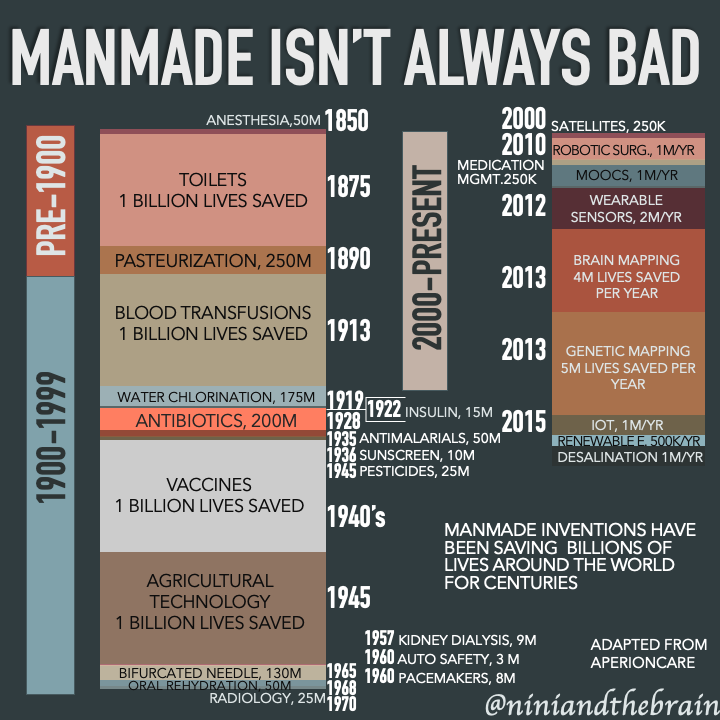
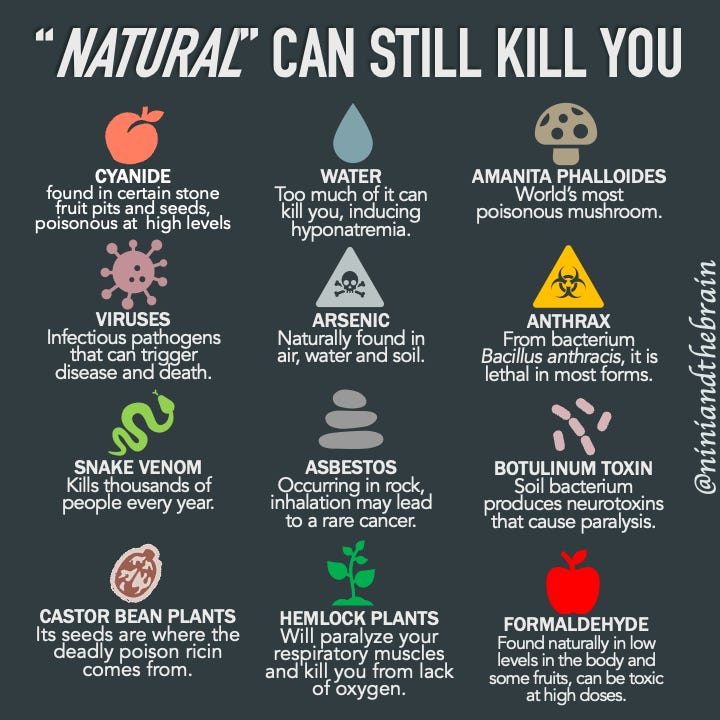
Toxicity depends on dosage, not origin. Both natural and synthetic substances can be harmful or beneficial depending on the amount. Thus, labeling something as harmful simply because it is synthetic overlooks the complex nature of toxicology and safety.
On a molecular level, the body doesn’t distinguish between naturally occurring and lab-made compounds. For example, whether it comes from a natural source like coffee beans or is synthetically produced in a lab, both sources of caffeine are identical on a chemical level; both have identical structures.The primary distinction is that synthetic caffeine is created from urea and chloroacetic acid, rather than being extracted from plants like natural caffeine. Once it enters the body, it is metabolized in precisely the same way, providing the exact same stimulating effects regardless of its origin.
The assumption that “natural” equals “good” is an appeal to nature, a logical fallacy. It oversimplifies the science and ignores the fact that both natural and synthetic substances have the potential to be safe or harmful. Snake venom, arsenic and many other natural substances prove that people don’t often say “nature is trying to kill us” for no reason.
Many business models capitalize on public confusion between hazard and risk, exploiting the misconception that ANY level of a harmful substance is dangerous. But even large amounts of H2O can be toxic and minuscule amounts of benzene - that you cannot help but be exposed to - won’t kill you.
Whew…stay tuned for Part 2 of the comments section.
Driven by data, powered by statistics, and fueled by innovation, A frustrated Latina (Nini)
For a Spanish version of this post, click here.
I'm Nini, a proud Colombian hailing from Barranquilla. My expertise spans from sensor design to neural interfaces, with emphasis on nanofabrication, data science & statistics, process control, and risk analysis. I am also a wife and a mom to one little girl. TECHing it Apart emerged from my drive to share in-depth insights on topics I cover on Instagram (@niniandthebrain), where I dissect misinformation that skews public health policy and misleads consumers through poor methodology and data manipulation, as well as trends in health technology. Content here is free, but as an independent writer I sure could use your support!










